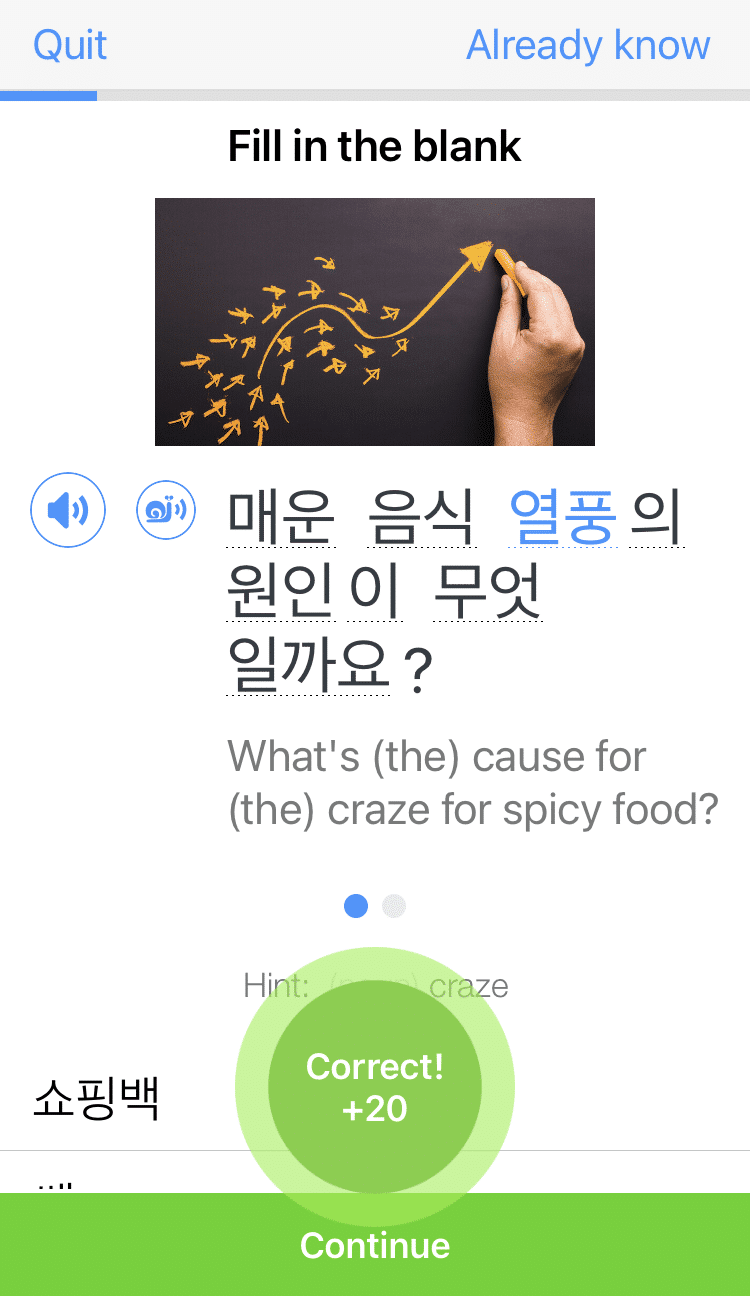Contents
- Most Common Korean Counters
- Counters That Use Native Korean Numbers
- 1. People
- 2. Animals
- 3. Inanimate Objects
- 4. Number of Years in Age
- 5. Number of Times Something Occurred
- 6. Text-based Materials
- 7. Bottles
- 8. Articles of Clothing
- 9. Pairs of Socks, Shoes or Gloves
- 10. Cars and Machines
- 11. Plates of Food
- 12. Bowls of Food
- 13. Beverages
- 14. Slices or Pieces of Food
- 15. Place or Areas
- 16. Packages and Packets
- Counters That Use Sino-Korean Numbers
- How to Use Korean Counters
- And One More Thing...
28 Common Korean Counters Used in Daily Life

Korean counters are the specific words used for… you guessed it… counting stuff. Counters are measuring terms that are specific to certain items.
There are over 100 Korean counters in existence, but you won’t have to learn them all (whew) since some aren’t used for most everyday conversations.
In this post, I’ll go over some of the most common Korean counters that are used constantly in daily goings-on.
Download: This blog post is available as a convenient and portable PDF that you can take anywhere. Click here to get a copy. (Download)
Most Common Korean Counters
For a quick overview, check out this list of the most common Korean counters! We’ll go over the first 28 words from this table in detail below.
| Counter | Used to count | Number system used |
|---|---|---|
| 명 / 사람 / 분 | People | Native |
| 마리 | Animals | Native |
| 개 | Inanimate objects | Native |
| 살 | Number of years in age | Native |
| 번 | Number of times something has occurred | Native |
| 권 | Books, notebooks and volumes | Native |
| 병 | Bottles | Native |
| 벌 | Articles of clothing | Native |
| 켤레 | Pairs of socks, shoes or gloves | Native |
| 대 | Cars and machines | Native |
| 접시 | Plates of food | Native |
| 그릇 | Bowls of food | Native |
| 잔 | Beverages | Native |
| 조각 | Slices of pieces of food | Native |
| 군데 | Places or areas | Native |
| 봉지 | Packages and packets | Native |
| 일 | Calendar days | Sino-Korean |
| 주 | Weeks | Sino-Korean |
| 년 | Years | Sino-Korean |
| 월 | Month numbers | Sino-Korean |
| 개월 | Duration in months | Sino-Korean |
| 등 | Levels or ranks | Sino-Korean |
| 실 | Rooms | Sino-Korean |
| 초 | Seconds | Sino-Korean |
| 분 | Minutes | Sino-Korean |
| 석 | Number of seats | Sino-Korean |
| 원 | Korean currency (won) | Sino-Korean |
| 불 | Counting dollars | Sino-Korean |
| 끼 | Meals | Native |
| 모금 | Sips, gulps or puffs | Native |
| 사발 | Bowls, typically of stew, soup or noodles | Native |
| 숟갈 술 | Spoons of (food), bites | Native |
| 입 | Mouthfuls | Native |
| 점 | Pieces of meat | Sino-Korean |
| 젓가락 | Chopstick-fulls | Native |
| 정 | Medicine tablets | Native |
| 첩 | Packets of herbal medicine | Native |
| 톨 | Nuts and grains | Native |
| 통 | Watermelons, or other round foods | Native |
| 판 | Set of 30 eggs | Native |
| 포기 | Plants with roots | Native |
| 대 | Age in terms of decades, also generation succession | Sino-Korean |
| 박 | Nights spent (in a location) | Sino-Korean |
| 보름 | 15 days (or half month) | Native |
| 세 | Age in years (formal in tone) | Sino-Korean |
| 학년 | Years spent in school, or current school grade | Sino-Korean |
| 그램 | Metric grams | Sino-Korean |
| 도 | Degrees | Sino-Korean |
| 미터 | Metric meters | Sino-Korean |
| 뼘 | Hand-span | Native |
Counters That Use Native Korean Numbers
The native Korean numbers are primarily used for counting purposes. So naturally, most Korean counters utilize native Korean numbers.
Remember: the native Korean system maxes out at number 99, but a counter can switch from using native Korean numbers to Sino-Korean numbers when a number goes beyond 99.
1. People
Example: 세 명 / 세 사람 / 세 분 (three people)
Yes, there are indeed multiple counters you can use for your fellow human beings. All of them literally translate to “person” or “people” but each one is used a little bit differently.
명 is a rather informal counter and one used among casual company. 사람 is generic and neutral, quite literally translating to “person.”
분, however, can actually be considered a kind of honorific, and the counter you should use when you’re talking about people who deserve a bit more respect.
It does make a difference since etiquette is imbedded in most aspects of Korean culture.
2. Animals
Counter used: 마리
Example: 곰 일곱 마리 (seven bears)
Whether it’s your pack of temperamental cats or a swarm of clownfish, this counter is used for our furry or scaly friends.
3. Inanimate Objects
Counter Used: 개
Example: 딸기 열 개 (10 strawberries), 의자 네 개 (four chairs)
This is a pretty ubiquitous counter. Because it can be used for so many items, I’d also suggest this as the “safe” answer if you don’t know the correct counter for a certain object.
The one time you should avoid using it is when you’re counting people because it comes off strange.
4. Number of Years in Age
Counter Used: 살
Example: 스물다섯 살 (25 years old)
You might have gleaned the use of this counter if you’ve already learned the question 몇 살이에요? which means “How old are you?”
You may be wondering: What about baby ages, which we typically calculate in months?
You won’t have to worry about that if you’re using the Korean age system, because as soon as a baby is born, it’s already considered one year old!
5. Number of Times Something Occurred
Counter Used: 번
Example: 일곱 번 (seven times)
From how many times someone walked into a glass door to the number of visits you’ve made to the bathroom, this counter is used whenever you want to tally up the number of times an action took place.
6. Text-based Materials
Counter Used: 권
Example: 책 서른 권 (thirty books)
This is for books, notebooks and volumes. If you’re talking about copies of the same book, however, you may want to specifically use the counter 부 instead.
7. Bottles
Counter used: 병
Example: 소주 스무 병 (20 soju bottles)
This is for the sodas, juices, water and 99 bottles (and no more) of beer or soju on the wall.
You’ll probably find good use for this counter if you ever chance upon a bar while enjoying Korean nightlife.
8. Articles of Clothing
Counter Used: 벌
Example: 재킷 아홉 벌 (nine jackets)
Use this counter for shirts, pairs of pants, jackets and so forth.
However, footwear and handwear utilize the next counter in this list.
9. Pairs of Socks, Shoes or Gloves
Counter Used: 켤레
Example: 구두 네 켤레 (four pairs of shoes)
Remember that this counter is used for pairs of these items! If you do want to count just a single sock, shoe or glove, then you should use the 개 counter.
10. Cars and Machines
Counter Used: 대
Example: 자동차 다섯 대 (five cars)
This counter applies for vehicles and other mechanical equipment, such as computers.
However, it can also be used to count punches (yes, the fist-type punches). So you can find a purpose for 대 in both an electronics store and a boxing ring!
11. Plates of Food
Counter Used: 접시
Example: 반찬 열세 접시 (13 side dish plates)
Here’s one to know when you’re eating at a Korean restaurant. 접시 literally means plate, so it’s easy to make the connection.
And trust me, this counter can be quite useful if you decide to take in a traditional Korean spread of side dishes—they come in bulk, and you’re bound to order seconds or thirds of any of them.
12. Bowls of Food
Counter used: 그릇
Example: 밥 세 그릇 (three bowls of rice)
This one is appropriate for food that comes out in bowls, such as nice steamy rice or filling Korean stew.
However, since 그릇 does just translate to bowl, you can also find it useful when you’re wandering around a kitchen supply store looking to buy bowl sets.
13. Beverages
Counter Used: 잔
Example: 주스 일곱 잔 (seven cups of juice)
잔 is used to measure cups and glasses of any drink (alcoholic or otherwise).
Keep in mind that this isn’t really the counter to use for measuring cups of an ingredient (like two cups of flour) for cooking purposes!
You could also say 컵 the Korean transliteration of the word “cup.”
14. Slices or Pieces of Food
Counter Used: 조각
Example: 빵 세 조각 (three slices of bread)
This is most commonly used for food items that can be chopped up, such as pizza, cake, bread, fruits and so forth.
It’s critical to know if you’re given the task of divvying up food for a group of people.
15. Place or Areas
Counter Used: 군데
Example: 열 군데 (10 places)
“Places and areas” can refer to geographic locations and places you can visit. It can also refer to specific spots on something, such as upon your body.
16. Packages and Packets
Counter Used: 봉지
Example: 라면 열 봉지 (10 packets of ramen)
You’ll find this commonly used for bags and packets of food, such as instant ramen or crackers.
봉지 itself just means a disposable bag. So you can use it for items like garbage, paper or plastic bags as well.
Counters That Use Sino-Korean Numbers
Counters that use Sino-Korean numbers tend to involve items that come in large quantities that the native Korean numbers aren’t able to cover.
17. Calendar Days
Counter Used: 일
Example: 육십 일 (60 days)
Whether it’s three days or 365 days, use this counter when you have to be mindful of the calendar.
18. Weeks
Counter Used: 주
Example: 이 주 (two weeks)
You can also use the similar counter 주간 when talking about week-based durations.
19. Years
Counter Used: 년
Example: 오십 년 (50 years)
Interestingly, there’s also another counter for years that uses native Korean numbers: 해
You can use either, although I find 년 to be more frequently used.
20. Month Numbers
Counter Used: 월
Example: 이월 (February), 오월 (May)
Yes, there’s a counter that specifies the actual months! The numbers correspond to the month number itself, so February would get number two, May number five, and so forth.
There’s a different counter for measuring out a number of months, which is the next one.
21. Duration in Months
Counter used: 개월
Example: 칠 개월 (seven months)
This is the counter to use for counting out the passing of months. You simply add 개 before 월 to specify that you’re talking about a timespan.
22. Levels or Ranks
Counter Used: 등
Example: 구 등 (nine levels)
A good counter to know if you have to consider ranks and grades, such as in a competition, during tests or even while playing video games.
23. Rooms
Counter Used: 실
Example: 화장실 일 실 (one bathroom)
Maybe you’re moving into a new Korean home. Or maybe you’re just bored and gazing at an interior design plan. Count rooms in a building with 실.
24. Seconds
Counter Used: 초
Example: 삼십 초 (30 seconds)
A great counter to use whenever you’re timing yourself for short-lived activities.
25. Minutes
Counter Used: 분
Example: 이십 분 (20 minutes)
When you’re telling the time in Korean, the counter 분 is used for minutes.
Remember that Sino-Korean numbers are used for telling minutes, while native Korean numbers are used for telling the hour.
26. Number of Seats
Counter Used: 석
Example: 팔십 석 (80 seats)
Use 석 with Sino-Korean numbers to measure out how many sitting spots are around. It doesn’t matter if it’s 10 seats in a classroom or thousands in a stadium!
27. Korean Currency (Won)
Counter Used: 원
Example: 백 원 (100 won)
원 is the actual name of the Korean currency, so you may not have thought of this as a counter.
Meanwhile, 돈 is actually the generic term for money.
28. Dollars
Counter Used: 불
Example: 오십 불 (50 dollars)
You can use the counter 불 strictly for American greenback dollars. It can come in handy if you’re ever at a Korean-run restaurant in the States.
You can also say 달러 for “dollar”—it’s just the Korean pronunciation of the English word!
How to Use Korean Counters
In English, counters follow a number and precede “of (an item)” like “two cups of tea” or “four heads of lettuce” or “five platoons of soldiers.”
In Korean, the typical format for describing items with their counters is:
Item + Number + Counter
If the number is in numeric form (instead of written in Korean), it’s often placed right next to the counter word without a space in between.
Note: Sometimes, the counter name is also the name of the item being counted, in which case you don’t have to also specify the item beforehand.
When using counters, you should first be familiar with the two Korean number systems: the native Korean numbers or the Sino-Korean numbers. Certain types of counters will typically use one system or another.
Try to learn as many Korean counters as you can and see how to use them in real contexts. Keep an eye and ear out for them whenever you’re exposed to Korean speech.
If there aren’t any Korean speakers around, you can check out authentic Korean media either online or on resources such as the FluentU program.
FluentU takes authentic videos—like music videos, movie trailers, news and inspiring talks—and turns them into personalized language learning lessons.
You can try FluentU for free for 2 weeks. Check out the website or download the iOS app or Android app.
P.S. Click here to take advantage of our current sale! (Expires at the end of this month.)
Counters will come in handy for all kinds of situations, so don’t dismiss them as a less-important side-topic! Instead, you should probably start learning them once you’re comfortable with both native and Sino-Korean numbers.
Download: This blog post is available as a convenient and portable PDF that you can take anywhere. Click here to get a copy. (Download)
And One More Thing...
If you enjoyed this post, you're already halfway to having the time of your life learning Korean with FluentU!
FluentU makes it possible to learn with K-pop videos, funny commercials, entertaining web series and more. Just a quick look will give you an idea of the variety of FluentU videos on offer:

FluentU really takes the grunt work out of learning languages, leaving you with nothing but engaging, effective and efficient learning. It's already hand-picked the best videos for you (which are organized by level and topic), so all you have to do is simply choose any video that strikes your fancy to get started.
Each word in the interactive captions comes with a definition, audio, image, example sentences and more.

Access a complete interactive transcript of every video under the Dialogue tab, and easily review words and phrases from the video under Vocab.

You can use FluentU’s unique Quiz Mode to learn the vocabulary and phrases from the video through fun questions.

FluentU keeps track of what you're learning, and tells you exactly when it's time for review, giving you a 100% personalized experience.
Review sessions use video context to help embed the words in your memory.
Start using the FluentU website on your computer or tablet or, better yet, download the FluentU app from the iTunes or Google Play store. Click here to take advantage of our current sale! (Expires at the end of this month.)








